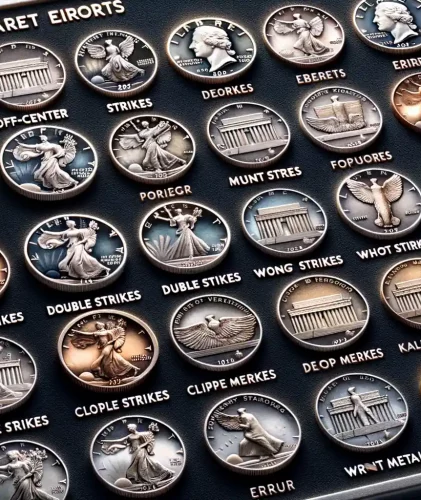Understanding Mint Errors and Their Impact on Coin Value
The Hidden World of Mint Errors
Imagine holding a coin that whispers secrets about its quirky creation. That’s the magic of mint errors—those unintentional missteps in manufacturing that turn everyday coins into treasures. These aren’t flaws to be dismissed; they’re marvels for collectors, like finding a Picasso with an accidental brushstroke.
Mint errors happen when something unexpected sneaks into the tightly controlled minting process. Maybe a planchet (the blank metal piece) wasn’t cut quite right, or a pressing machine hiccupped during production. Each error tells its own story: a slight misalignment, doubling of an image, or even a coin minted on the wrong metal. And these stories? They make certain coins priceless.
Why Do These Blemishes Boost Value?
Not all errors are created equal, but rare ones can skyrocket a coin’s worth. Why? Because collectors love what’s unusual and unique! Some of the most sought-after mint errors include:
- Off-Center Strikes: Where part of the design seems to wander off the edge.
- Double Dies: Designs appear eerily duplicated, like seeing double.
- Wrong Planchet Errors: Imagine a penny design printed on a dime’s metal!
Each error is like a fingerprint—the rarer, the more valuable. So, keep your eyes peeled; treasures hide in the quirkiest corners of your change jar!
Common Types of Rare Mint Errors
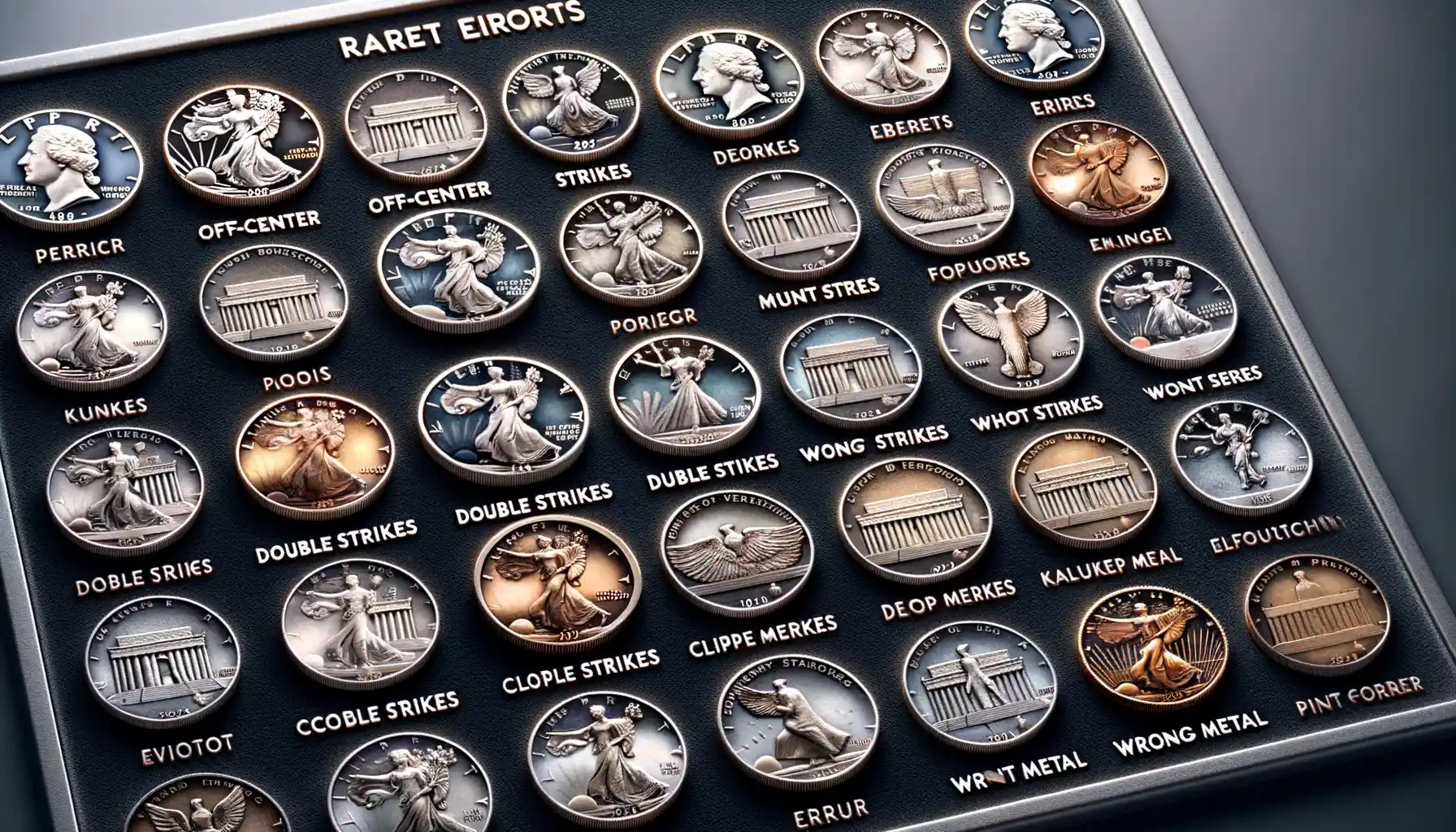
Struck Through Errors: Coins With a Hidden Story
Ever seen a coin that looked like it had been through a battle? That strange texture or missing detail might be the result of a struck through error. This happens when something—like grease, cloth, or even wire—gets between the die and the coin during minting. Imagine a tiny piece of lint sneaking into the minting process and etching its ghostly silhouette into a coin forever. Some collectors adore these little accidents because they make the coin completely one-of-a-kind.
These errors can vary wildly: maybe only part of the design is missing, or perhaps you’re holding a coin where half the face looks melted! A struck through grease error, for example, can blur away key details like the date or mint mark, leaving behind a mystique that draws in curious collectors.
Off-Center Strikes: Beautifully Imperfect Coins
When a coin isn’t struck perfectly in line with the die, you get an off-center strike, and oh, what glorious chaos it creates! Instead of a neat circular border, part of the design gets chopped off, while some blank metal protrudes on the other side. Ever wanted a coin where Lady Liberty seems to peek shyly from the edge? This is your chance.
These coins come in varying degrees of “off-centeredness,” from a slight misalignment to ones so off-the-mark they look like abstract art. Many collectors dream of finding one that’s 50% off-center but still shows the date—it’s like the holy grail of mint oddities.
- Off-center pennies: Surprisingly common but still incredibly collectible!
- Nickels and dimes: Quirky and often overlooked, these can surprise you with their value.
- Quarters: The bigger the denomination, the bigger the excitement.
Every flaw tells a story, and these captivating mistakes remind us that perfection isn’t everything, especially when it comes to rare mint errors.
Techniques to Identify Mint Errors in Your Coins
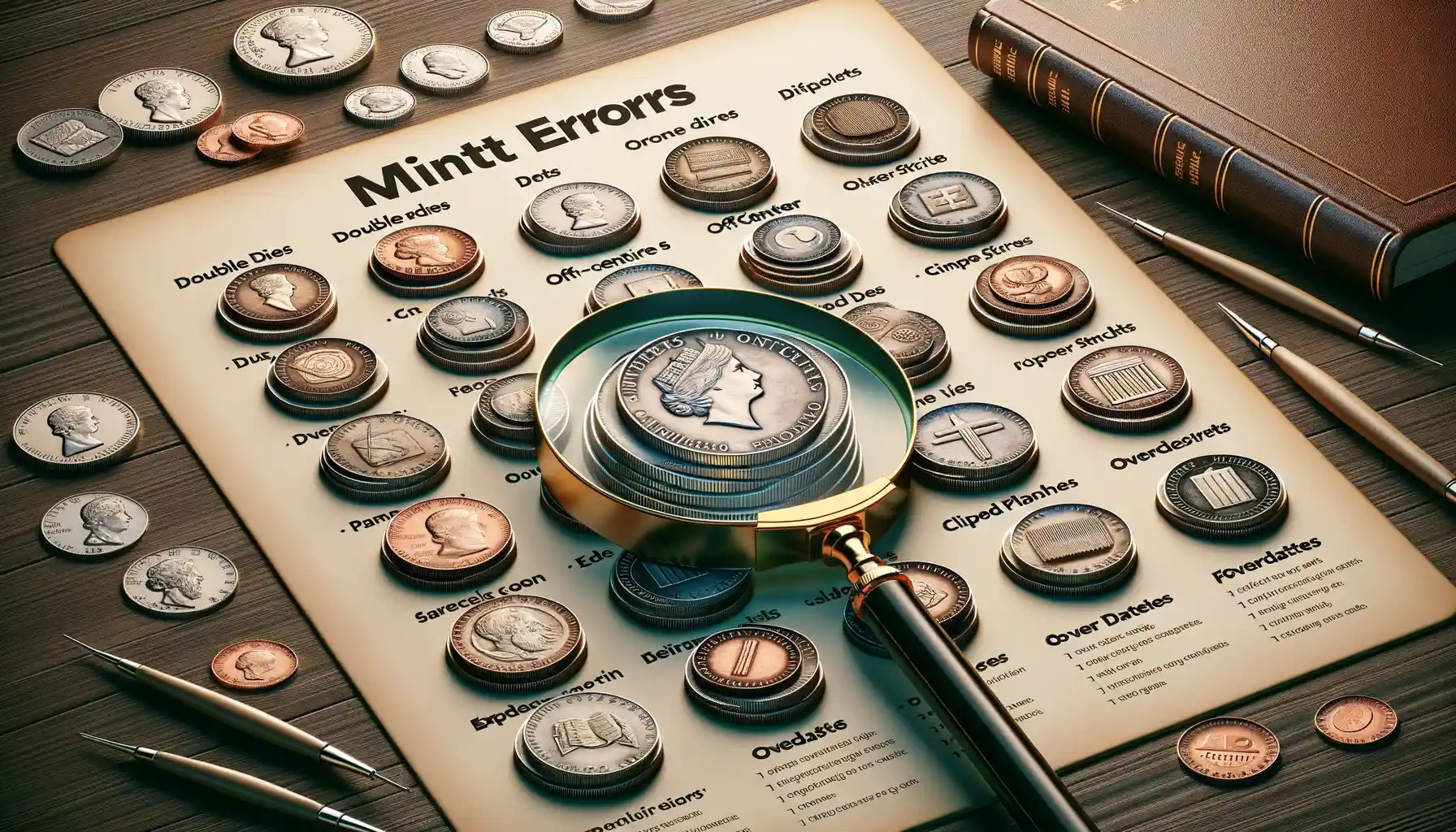
Spotting the Subtle Signs of Mint Errors
Have you ever taken a closer look at a coin and noticed something that feels just… off? That strange detail might not be wear and tear—it could be a valuable mint error. To uncover these hidden treasures, you’ll need sharp eyes and a little detective work.
Here’s a quick tip: start by observing the coin’s design. Does the alignment look correct? A misaligned strike can leave part of the design missing or oddly positioned. Flip the coin—if the front (obverse) and back (reverse) don’t align perfectly, you might have what’s called a rotated die error.
Now grab a magnifier (your new best friend). Look closely along the edges to spot quirky mismatches like a partial edge rim or a double rim, often caused by errors during the striking process. Even tiny details like repeated letters or numbers (known as a doubled die) can increase a coin’s value immensely.
- Check for cracks or lines on the surface—these often signal a die break.
- Run your fingers across the coin. Feel something bumpy? That texture could hint at clashing, where dies pressed together without a blank planchet in between.
With practice, you’ll find yourself able to catch these quirks effortlessly. Who knows? Your keen eye might just uncover a jackpot hiding in plain sight!
How Mint Errors Affect the Rarity and Value of Coins
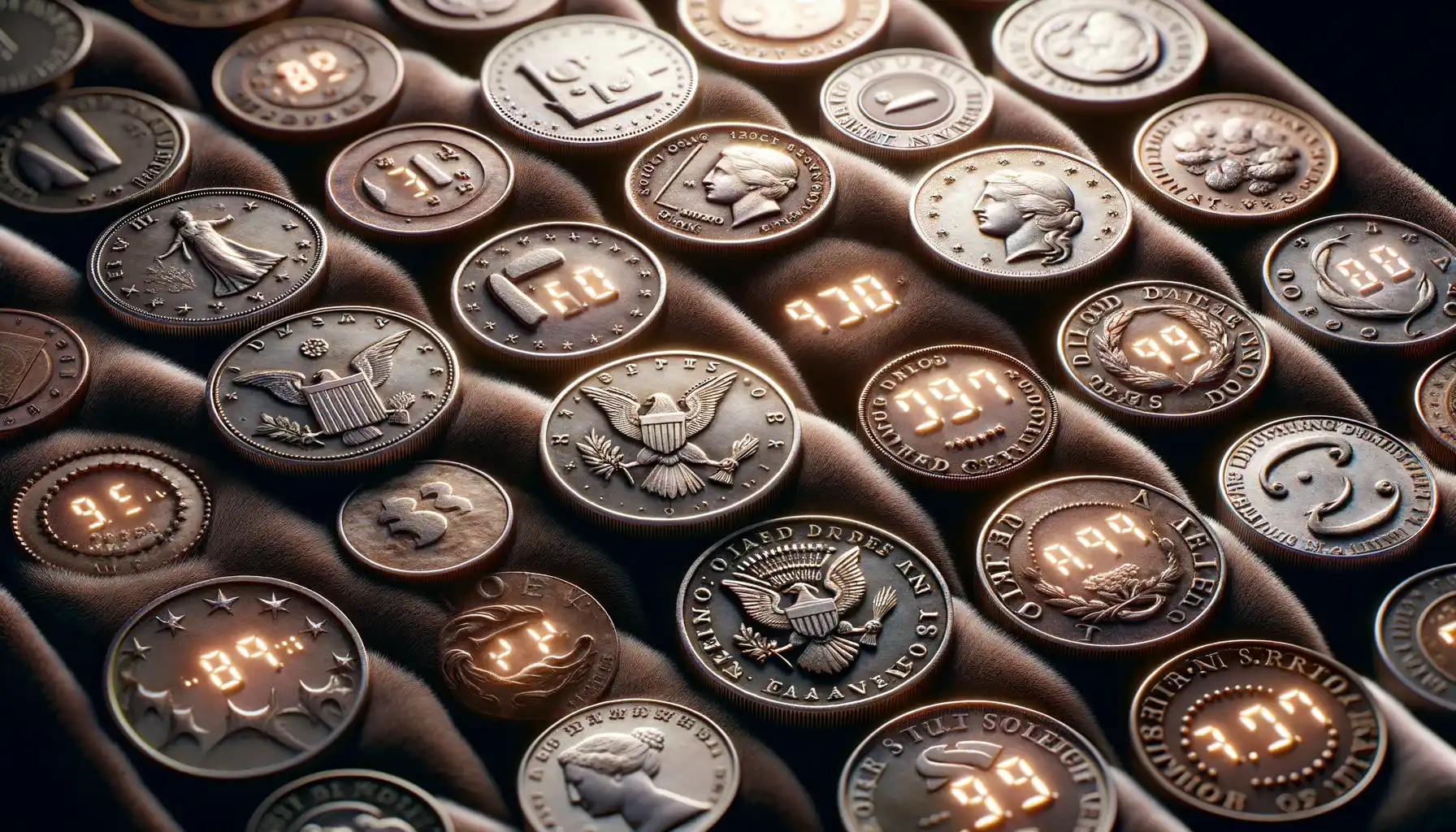
The Allure of Imperfections: Why Mint Errors Are So Coveted
Imagine discovering a coin that’s not just different but utterly unique, like accidentally finding a rare gem in your backyard. That’s the magic of mint errors. These quirks—caused by mishaps during the coin-making process—can transform an ordinary piece of currency into a collector’s dream treasure.
What makes these flawed beauties so valuable? It boils down to rarity and demand. When you think about it, coins are supposed to be perfect replicas, mass-produced with machine precision. So when a coin rolls off the press with an error—be it a missing date, double image, or uneven cut—it becomes an anomaly. And let’s face it, anomalies always spark curiosity and excitement.
How Errors Impact Value: A Mix of Rarity and Storytelling
Some errors are mere curiosities, while others send collectors into a frenzy. Here’s why:
- Low Production Numbers: Most mint errors happen briefly before being caught and corrected, limiting their availability.
- Visual Appeal: Errors like off-center strikes or doubled lettering stand out dramatically, making them more desirable.
- Historical Significance: Certain errors carry a fascinating backstory—imagine owning a coin that slipped through quality checks during wartime frenzies!
Collectors aren’t just buying a flawed coin; they’re investing in its story, its intrigue, and its sheer uniqueness.
Tips for Collectors and Buyers When Dealing with Mint Error Coins
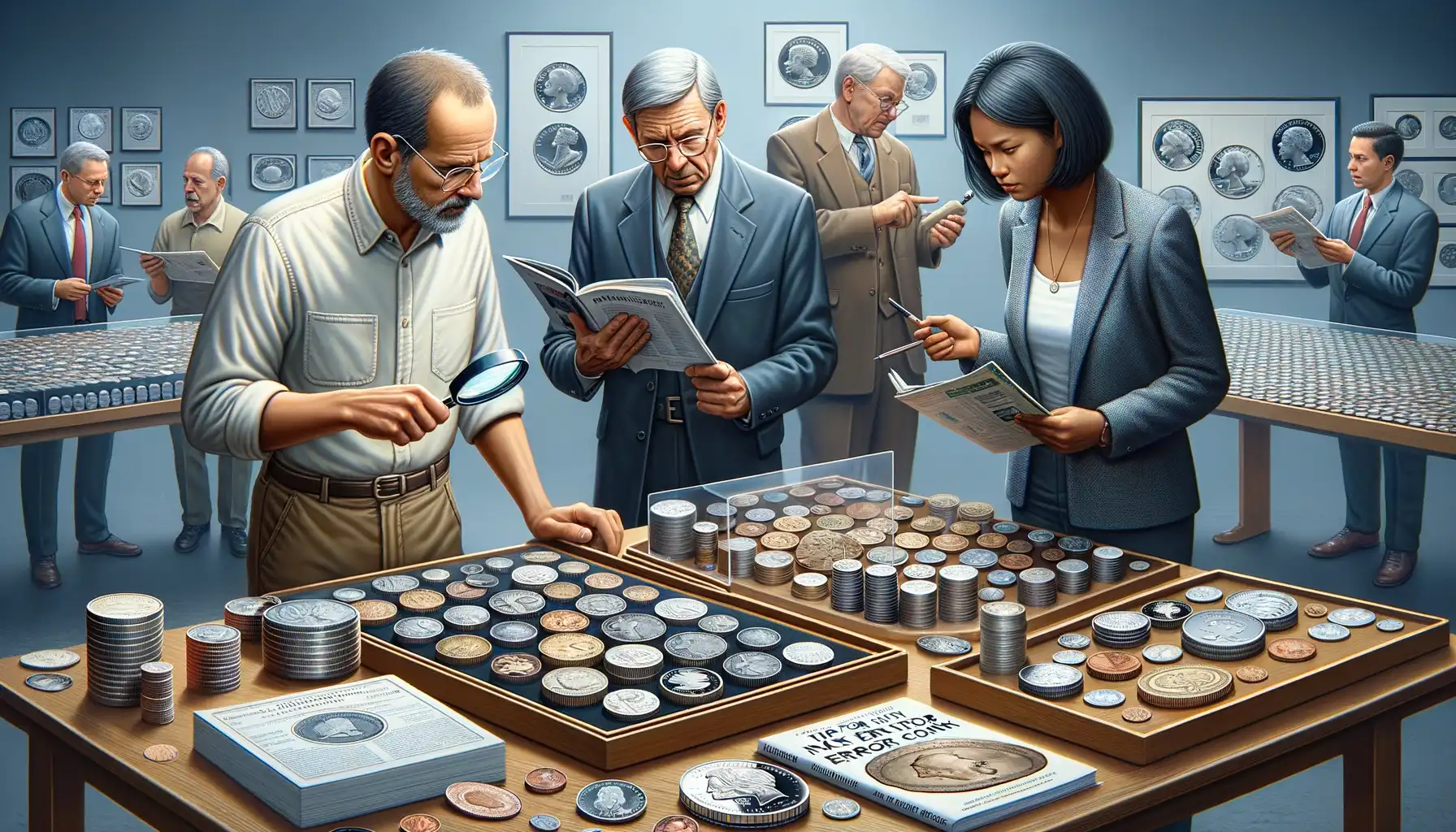
What to Look For Before Buying a Mint Error Coin
When stepping into the fascinating world of mint error coins, your eagle eye is your best friend. These little treasures, with their quirky imperfections, are more than just metal—they’re miniature stories of mishaps at the mint. But before you open your wallet, there are some key things to consider.
First and foremost: always verify authenticity. Plenty of fakes lurk in the shadows, preying on eager collectors. To ensure you’re snagging the real deal, invest in a reputable third-party grading service like PCGS or NGC. Their certification not only ensures the error’s legitimacy but also boosts its resale value. Win-win, right?
- Examine the coin’s condition carefully—does it have good eye appeal despite the flaw?
- Understand the rarity of the error type. Not all errors are created equal! A double strike will generally spark more excitement than a minor misalignment.
- Ask questions—where did the seller source this coin? Transparency is king.
Staying Savvy When Adding to Your Collection
Emotion can sometimes cloud judgment, especially when you spot a coin that feels one-of-a-kind. Take a deep breath. Rare doesn’t always mean valuable; study recent auction trends for similar errors. If a price seems too good to be true, trust your gut—it likely is.
Finally, remember that patience pays off. Hunting for mint error coins isn’t about rushing—it’s about the thrill of discovery. Collect what you love, and let your collection reflect your unique taste. That’s where the magic happens!

